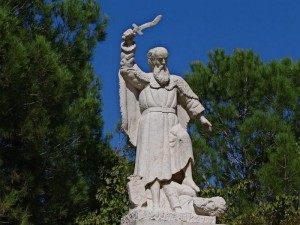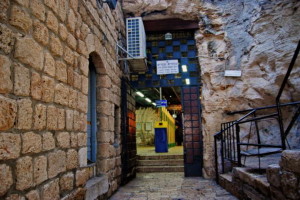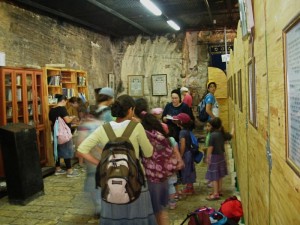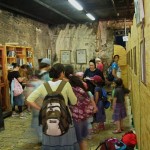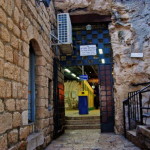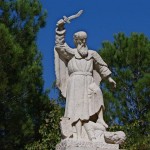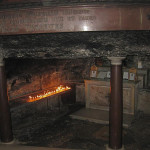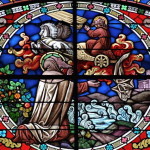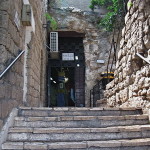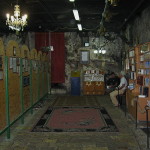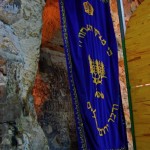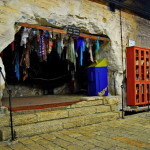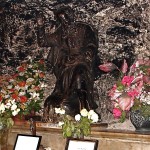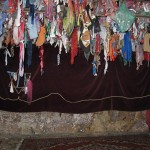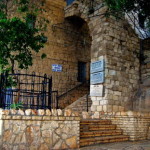Pre-Biblical and early Biblical times
BC
c. 7000: Jericho is a walled settlement
c. 5000-4000: Land of Canaan is occupied by Canaanites, then Amorites and Jebusites.
c. 2000: Founding patriarch Abraham and his tribe settle in what becomes Judea.
c. 1500: Abraham’s descendants, led by Joseph, settle in Egypt.
c. 1260: Moses leads Israelites in Exodus from Egypt.
c. 1200: Israelites under Joshua enter Promised Land.
c. 1000: David captures Jebusite city of Jerusalem and makes it his capital.
c. 970: Solomon builds First Temple.
Two kingdoms
c. 930: Israel splits into northern kingdom of Israel and southern kingdom of Judah (including Jerusalem).
c. 720: Northern kingdom conquered by Assyria and its 10 tribes sent into exile.
c. 700: Southern kingdom’s King Hezekiah cuts tunnel from Gihon Spring to Pool of Siloam.
701: Assyrians conquer much of southern kingdom; Jerusalem is besieged but survives.
597: Nebuchadnezzar II of Babylon captures southern kingdom and Jerusalem.
587: Following rebellion, Nebuchadnezzar destroys Jerusalem and First Temple, deporting most of population to Babylon (in present-day Iraq).
Persian rule
539: Cyrus the Great of Persia conquers Babylon and allows Jews to return from captivity.
515: Second Temple is completed.
444: Nehemiah rebuilds city walls of Jerusalem.
Hellenistic rule
332: Alexander the Great conquers Persian Empire, including all of Palestine.
323: Alexander dies and his kingdom is divided into four parts; Palestine falls under Ptolemaic Dynasty of Egypt, then under Seleucid Empire of Syria.
175: King Antiochus IV of Syria bans traditional Jewish practices and desecrates Temple.
167: Judas Maccabeus leads successful revolt against Seleucid Empire, rededicates Temple and restores religious freedom.
Hasmonean rule
140: Simon Maccabeus, a brother of Judas, establishes Hasmonean Dynasty, which rules an independent Jewish kingdom for 103 years.
63: Rivalry between Simon Maccabeus’ great-grandsons, Hyrcanus II and Aristobulus II, brings civil war that ends with Roman general Pompey controlling the kingdom.
37: Rome proclaims Herod as King of Israel, now a Roman client state, ending the Hasmonean Dynasty.
Roman rule
20: Herod expands Temple Mount and rebuilds Temple.
c. 3: Jesus Christ is born in Bethlehem.
1: Herod dies and his kingdom is divided among his sons, Philip, Antipas and Archelaus.
__________________________________________________________________________
AD
26: Pontius Pilate becomes procurator of Roman province of Judea.
c. 27: Jesus is baptised by his cousin John the Baptist and begins his public ministry.
c. 30: Jesus is condemned to death and crucified.
c. 32: Stephen, first Christian martyr, is stoned to death.
c. 34: Paul is converted on the way to Damascus.
41-44: Jerusalem’s “Third Wall” is built by King Agrippa I.
c. 50: Council of Jerusalem, first recorded council of Christian leaders, is held.
c. 45-120: Books of the New Testament are written.
67: During First Jewish-Roman War, Christians in Palestine flee to Pella in Jordan.
70: Romans destroy Jerusalem and Second Temple.
73: Masada falls to Romans.
130: Emperor Hadrian rebuilds Jerusalem, renaming it Aelia Capitolina, and puts pagan temple over site of the Crucifixion and Resurrection.
135: Hadrian crushes Second Jewish Revolt and expels Jews from Palestine.
301: Armenia becomes first nation to make Christianity its state religion.
313: Emperor Constantine I legalises Christianity.
325: At Council of Nicaea, Bishop Macarius of Jerusalem asks Constantine to reclaim site of crucifixion and Resurrection and build a church there.
326-7: Constantine’s mother, Helena, visits Holy Land, finds True Cross and orders churches built on sacred sites; large-scale pilgrimages begin.
Byzantine rule
330: Constantine moves his capital from Nicomedia to Byzantium (renamed Constantinople, now Istanbul).
335: Church of the Holy Sepulchre is consecrated.
380: Emperor Theodosius I makes Christianity the religion of the Roman Empire.
386-420: Jerome produces Vulgate translation of Bible in his Bethlehem cave.
395: Roman Empire splits into East and West.
c. 500: Jerusalem Talmud completed by rabbinic schools in Galilee.
570: Birth of Muhammad.
614: Persians capture Jerusalem, destroying many churches and burning Church of the Holy Sepulchre.
622: Muhammad escapes assassination in Mecca and flees to Medina, his flight marking first year of Islamic calendar.
629: Emperor Heraclius I re-establishes Byzantine rule in Jerusalem and recovers True Cross stolen by Persians.
Islamic rule
638: Islamic forces conquer Jerusalem, beginning rule by succession of Arab dynasties.
661-1000: Palestine variously ruled by Arab caliphs in Damascus, Baghdad and Cairo.
692: Dome of the Rock completed on Temple Mount.
1009: Sultan al-Hakim destroys Church of the Holy Sepulchre.
1048: Church of the Holy Sepulchre restored by Emperor Constantine Monomachus.
1054: Great Schism splits Christian Church into Eastern (Greek) and Western (Latin) branches.
1071: Seljuk Turks capture Jerusalem, persecuting Christians, desecrating churches and barring pilgrims.
Crusader rule
1099: First Crusade captures Jerusalem and establishes Latin kingdom; Dome of the Rock becomes church called Templum Domini (Temple of the Lord).
1149: New Church of the Holy Sepulchre completed.
1187: Sultan Saladin defeats Crusaders at Horns of Hattin above Sea of Galilee, then takes Jerusalem.
Islamic rule again
1219: St Francis of Assisi visits Egypt and meets Sultan Melek al-Kamil.
1229: During Sixth Crusade, Holy Roman Emperor Frederick II negotiates return of Jerusalem and other Christian sites to Crusader kingdom.
1229: Franciscans establish themselves in Jerusalem near Fifth Station of Via Dolorosa.
1244: Jerusalem is sacked by Khwarezmian Tartars; control quickly passes to Egyptian Ayyubids and then Mamluks, who rule until 1517.
1291: Crusaders’ last foothold, Acre, falls to Mamluks.
1342: Pope Clement VI formally establishes Franciscan Custody of the Holy Land.
Ottoman rule
1517: Ottoman Turks take control of Palestine from Mamluks.
1517: Martin Luther begins Protestant Reformation in Europe.
1538: Sultan Suleiman the Magnificent builds present walls of Old City of Jerusalem.
1757: Ottoman Turkish edicts give Greek Orthodox major possession of Church of the Holy Sepulchre and other holy places.
1808: Fire rages in Church of the Holy Sepulchre; Tomb of Christ is severely damaged when dome falls in.
1812: Swiss explorer Johann Ludwig Burckhardt rediscovers Nabatean city of Petra.
1839: British Jew Sir Moses Montefiore proposes idea of a modern Jewish state.
1842: First Anglican bishop of Jerusalem, Michael Solomon Alexander, a converted Jewish rabbi, arrives.
1849: Christ Church in Jerusalem, oldest Protestant church in Middle East, is built.
1852: Under pressure from Russia, Ottoman Sultan Abd-ul-Mejid directs that possession of holy places remains according to 1757 edict.
1853-56: Possession of holy places is one cause of Crimean War between Russia and major European powers.
1860: First Jewish immigrant neighbourhood outside Old City of Jerusalem is established, funded by Sir Moses Montefiore.
1878: “Status Quo” defining possession of holy places is incorporated into international law by Treaty of Berlin.
1883: General Charles Gordon proposes Skull Hill as Calvary and Garden Tomb as place where Christ was buried.
1884: Mosaic map of Holy Land discovered in floor of 6th-century church at Madaba, Jordan.
1909: Joseph Baratz and 11 others establish first kibbutz in Palestine, called Kvutzat Degania (“Wheat of God”), at southern end of Sea of Galilee.
1917: British government’s Balfour Declaration backs establishing Jewish homeland in Palestine, without prejudice to “civil and religious rights” of non-Jewish population.
British mandate
1917: British forces under General E. H. Allenby capture Palestine from Ottoman Turks.
1922: League of Nations approves British mandate of Palestine.
1946: Jordan gains independence from Britain.
1947: United Nations Partition Plan calls for a Jewish state and an Arab state in Palestine, with Greater Jerusalem (including Bethlehem) under international control; most Jewish groups accept plan but Arabs reject it.
1947: Dead Sea Scrolls are discovered at Qumran.
1948: Amid civil unrest and violence, Britain withdraws from mandate.
Israel and Palestinian Territories
1948: After Jewish provisional government declares Israel an independent state, Arab forces invade.
1949: Israel prevails in Arab-Israeli War, though Egypt holds Gaza, and Jordan the West Bank and East Jerusalem; more than 700,000 Palestinians become refugees.
1967: In Six-Day War against Egypt, Jordan and Syria, Israel occupies Sinai, Gaza, Golan Heights, West Bank and East Jerusalem.
1969: Church of the Annunciation in Nazareth, largest Christian church in Middle East, is completed.
1973: In Yom Kippur War against Egypt and Syria, Israel makes further territorial gains.
1979: Israel and Egypt sign peace treaty; Israel agrees to return Sinai to Egypt.
1986: Remains of fishing boat from time of Jesus found in Sea of Galilee.
1987-93: Palestinians carry out First Intifada (uprising) against Israeli occupation.
1993: Israel gives Palestinian National Authority limited autonomy in West Bank and Gaza.
1994: Jordan and Israel sign peace treaty.
1996: Excavations begin at likely site of Christ’s baptism, in former minefield at Bethany Beyond the Jordan.
1997: Interchurch co-operation completes 36-year restoration of Church of the Holy Sepulchre; reconstruction of Tomb of Christ edicule remains to be done.
2000-05: Second Intifada follows controversial visit by Israeli politician Ariel Sharon to Temple Mount.
2002: Israel Defence Forces besiege Palestinian militants in Church of the Nativity, Bethlehem, for 39 days.
2002: Israel begins building 700-km West Bank separation wall.
2005: Remains of early 3rd-century church found at Megiddo.
2005: Israel withdraws settlers and military from Gaza.
2007: Archaeologist Ehud Netzer discovers Herod the Great’s long-lost tomb at Herodium.
2008: Responding to rocket attacks, Israel launches 22-day war against Gaza.
2009: Archaeologists in Nazareth uncover residential building from time of Jesus.
2012: United Nations General Assembly accepts Palestine as a “non-member observer state”.
2013: City of David excavators find clay seal inscribed with name of Bethlehem, first reference to the city outside the Bible.
2014: Discovery of nine previously unknown Dead Sea Scrolls announced; the tiny texts were inside unopened tefillin (prayer cases) found at Qumran in 1952.
2014: Responding to rocket fire, Israel launches seven-week bombardment of Gaza.
2017: Restoration of Tomb of Christ in Church of the Holy Sepulchre is completed.
2020-21: Covid-19 pandemic causes many deaths and disrupts the economy of the Holy Land as lockdowns stop pilgrimages and tours.
2021: About 80 new fragments of biblical scrolls, bearing lines from the books of Zechariah and Nahum, are found in the Judaean desert.


